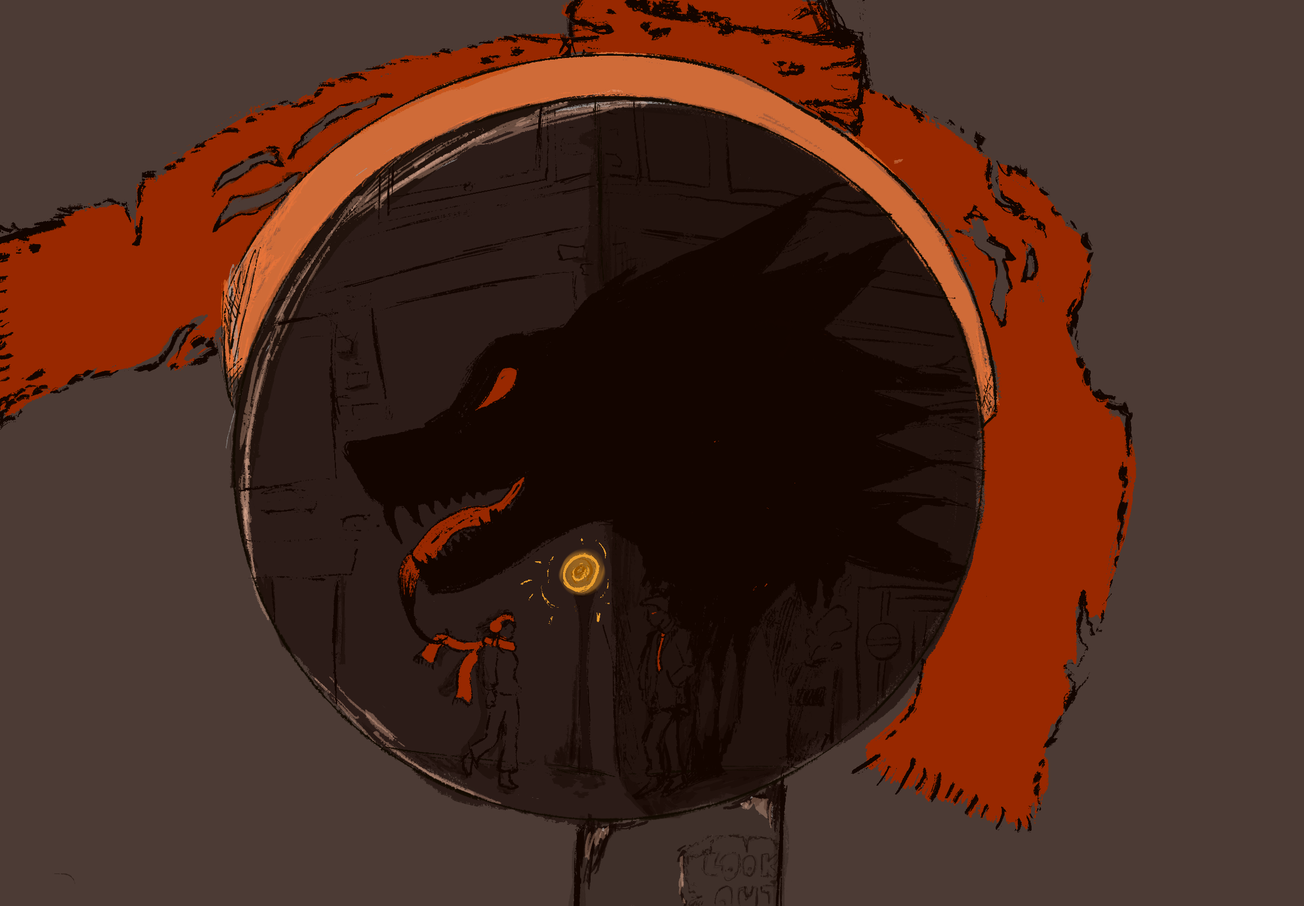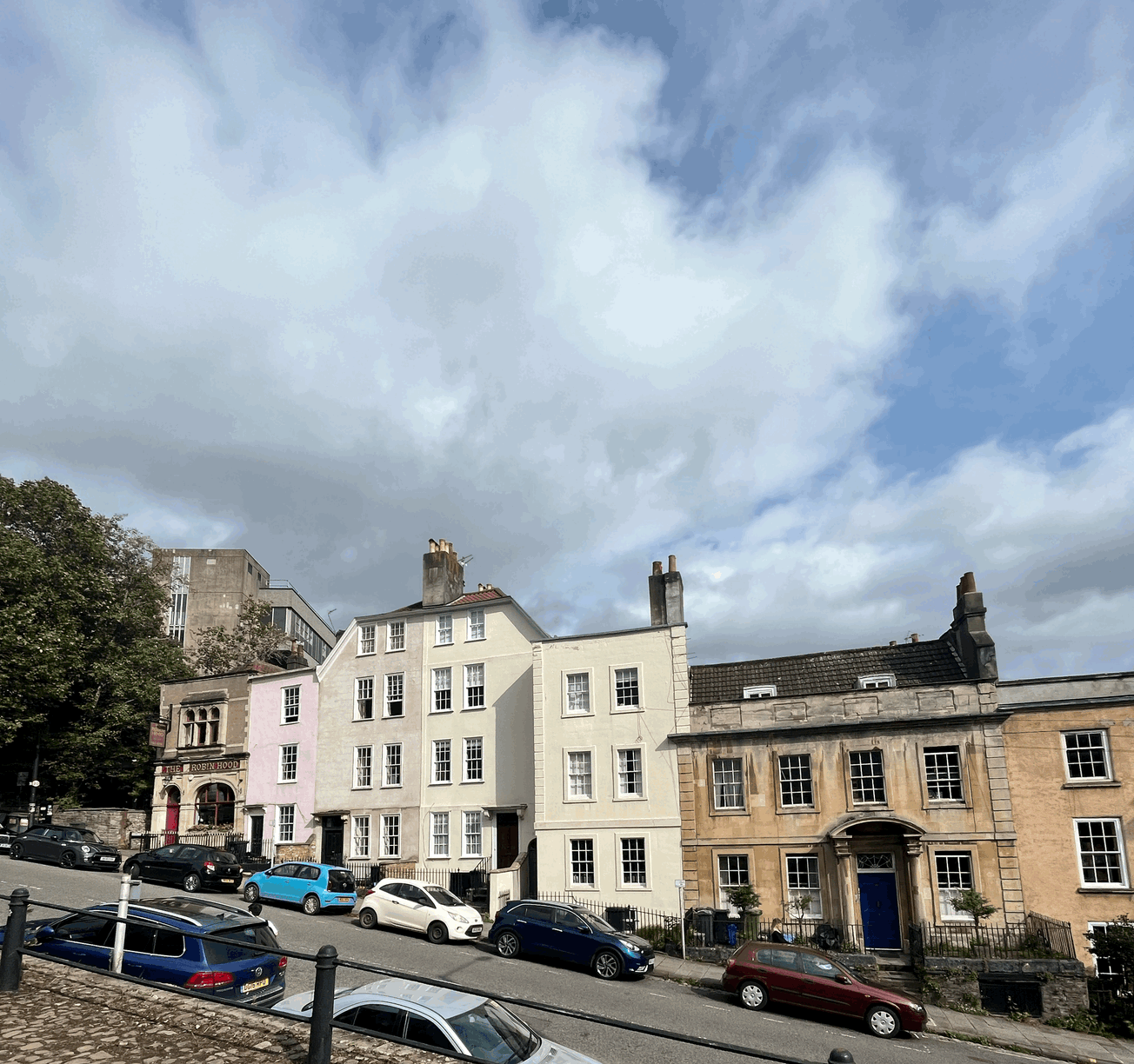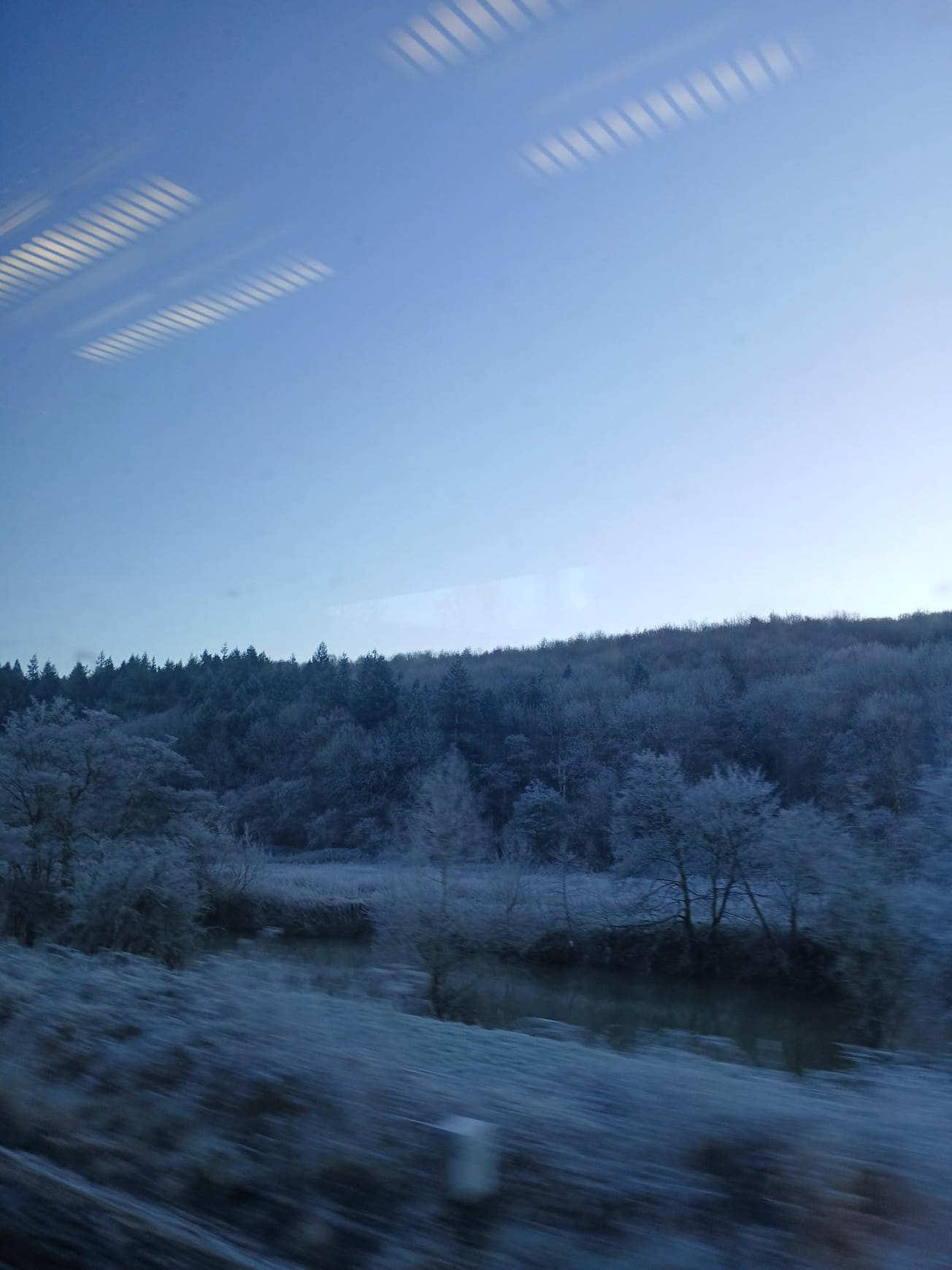By Hannah Corcoran, First-Year, English
On a crisp autumn afternoon, we convene outside the Arts Complex for a medieval walking tour graciously organised by Dr. Hattie Soper. She begins by telling the group that the land on which the University of Bristol and Bristol Grammar School is built used to be groves where locals would congregate… and copulate. At a time when whole families and their guests slept in one room, ‘Fucking Grove’ was a comparatively secluded place where the locals could have sex. Understandably, Bristol Grammar School do not have any information on this on their ‘History of BGS’ webpage – only that Henry VIII founded the school ‘for the teaching of “good manners and literature.”’ How informed he was of the explicit activities occurring on the site, we are unsure.
Leaving behind the site of ill-repute, we walk to the top of St Michael’s Hill – once ‘Gallows fields’ – where Dr Soper points out the only remaining part of Bewell’s Cross, its base now part of the church wall built around it. First referenced in 1373, it would have been the last thing any victims of the gallows would have seen before being hanged. The location of the gallows has been pinpointed as the traffic island at the bottom of Cotham Road – the everyday made eerie.
Further down the road is St Michael’s on the Mount Without, a church which dates back to the 1190s. For a name that adheres to a rhyme, the church has defied attack from ruin, Blitz, ruin again, and fire, enduring countless trials and conservation efforts.
We cross Perry Road and Colston Street and reach Foster’s Almshouse, a mock medieval building attached to the truly medieval Chapel of the Three Kings of Cologne. The statues of the Three Wise Men are 20th-century additions. These noble statues contrast the fact that medieval church decoration could be sexual or crude, such as in the Church of St Mary Redcliffe where there is a depiction of a defecating man on the ceiling. The purpose of decorations like this, and why they were tolerated by the church, is debated. Some scholars argue they were supposed to be metaphors for resisting temptation, while others argue it was just craftsmen using their creative licence.
Descending Christmas Steps, we reach a gated archway to a courtyard. This was once St Bartholomew’s Hospital. Notably different from the modern definition, a medieval hospital was more a place of general refuge. Dr Soper tells the group that in 1285 this was the site of the gruesome murder of the hospital’s master by two monks – as if living next to the slippery Christmas Steps wasn’t enough of a hazard. (Note that Christmas Steps were not actually steps until 1669, so at this point in history it was merely a very steep street, more akin to a death slide of sorts).
Across the road is St John on the Wall, its spire rising majestically between brutalist buildings. Built into the city walls in the 14th century for not only religious purposes but also for defence, the church is the last remains of the city wall. We are greeted by volunteer, Sarah, inside the church. She explains that the now whitewashed west wall was rumoured to conceal a medieval wall painting. In a patch test conducted in 2016 by consultant Kalypso Kampani, medieval pigments were revealed, confirming that the painting is indeed there. However, there is not yet the funding to uncover and restore it fully. The original church would not have had pews – these are Victorian additions – but would have been highly decorated with colourful wall paintings. The stained glass, though striking, appears disordered due to mishandling during its removal and subsequent reinstallation following the Bristol Blitz.
Up a narrow wooden staircase and behind the organ is the bell tower. Sarah spots me approaching one of the bell ropes and adds that it’s possible to fly off the ground if you have no experience with bellringing. Having avoided a slapstick moment, I follow the group back downstairs and outside. We are led to a mysterious small door on the side of the church. Inside is the crypt where you can find the alabaster tombs of an unknown merchant and his wife; beneath our feet are ten panels representing their children. The vaulted ceiling is low as the crypt’s floor is the original church floor. Outside, what is now referred to as Nelson Street – an equally historically problematic name – was once called ‘Grope Cunt Lane.’ Once a common medieval street name identifying it as a place of sex work – similar to those found in Oxford – the name has evolved into tamer variations like ‘Grove Lane.’
Having endured the Bristol Blitz, St John on the Wall now faces ongoing threats from nearby road and construction activities, as well as the constant vibrations of passing buses, all of which strain its structural integrity. Sarah shows us some of the damage, including a section of the crypt’s vaulted ceiling that is crumbling away. Down Broad Street, we sit and drink coffee at a café with St John on the Wall to our backs. While literally part of the fabric of the city, St John on the Wall faces an uncertain future if urgent conservation cannot be completed.
To learn more about the uncertainties the church faces, Epigram spoke with Beth, a West Region Business Support Officer from the Churches Conservation Trust – an organisation dedicated to restoring and preserving historic churches across the UK. She notes that churches in urban areas like St John on the Wall are particularly vulnerable to theft and vandalism. While funding from the government and the Church of England supports the organisation, it is not sufficient. Donations and volunteers are vital. The power of funding is transformative not only for restoration purposes but also for the wider community. In partnership with Circomedia – a leading Bristol-based circus school – and the Heritage Lottery Fund, the Churches Conservation Trust renovated St Paul’s Church, Bristol. The project has been credited for improving safety and reducing street crime in what has historically been a deprived area of Bristol.
Continuing the tour into the city centre, we wind through the sleepy Old City, coming out by Bristol Bridge, which was once a stretch of Dutch-style houses. Walking back on ourselves, we finish the walk at College Green. Before 1542, Bristol Cathedral was part of St Augustine’s Abbey. The Abbey deemed itself independent from the Corporation ( or Council) of Bristol’s jurisdiction and thus became a refuge for all, including criminals. As a result of this, tensions escalated, culminating in a violent confrontation on College Green in 1496, sparked by the sight of a monk wielding a poleaxe. In recounting this, as if on cue, a football is kicked by a schoolboy – perhaps stirred by such talk of medieval weaponry – straight in the direction of Dr Soper’s head. (Fortunately, he missed and Dr Soper remains unharmed!)
‘You want me to destroy the hills?’: Count Binface is ready to serve Bristol
The graduate market: Is it all doom and despair?
As students, it's important to step outside and reconnect with our city’s history from time to time. When the nights grow longer, the cold bites and the temptation to stay indoors becomes overwhelming, why not instead explore some of the medieval sights, or volunteer at one of Bristol's historic landmarks?
Featured Image: Unsplash / Ben Garratt
Thank you to the Department of English’s Dr Hattie Soper and Dr Cathy Hume, who have shared their research with Epigram for this article. They hope to run another walking tour next year which will be open to all staff and students.









